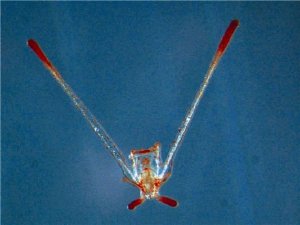Jul 22 2009
Oxide ceramics like zinc oxide, zirconia or titania can be used in photovoltaic or fuel cells and as very scratch-resistant coatings. These functional materials - non-metallic inorganic solids - are produced with a very high effort in terms of process engineering and at high temperatures and/or pressure. This imposes high costs on the production process and in addition technical restrictions are reducing the field of application, e.g. temperature sensitive materials like plastics can not be integrated. Hence, the formation of complex multi-functional structures is difficult or even impossible. Scientists from the University of Stuttgart are working now in a cross-faculty research project to produce oxide ceramics by biological means.
 (Picture: Biologisches Institut).
(Picture: Biologisches Institut).
The scientists imitate the natural concept of biomineralization to produce non-metallic inorganic materials under environmental conditions. Organisms produce a bioorganic template to induce and control the formation of an inorganic phase (e.g. calcium carbonate) in an aqueous solution. This natural process offers promising perspectives for the synthesis of functional materials. Unfortunately, nature produces only minerals with minor technical importance. The interdisciplinary working group of Stuttgart University under participation of institutes of the faculties for chemistry as well as for energy technology, process engineering and biological engineering is working to overcome this issue. The Deutsche Forschungsgemeinschaft (DFG) supports the project with 1.5 Mio. Euro for an initial term of 3 years. Seven scientific and technical positions will be established among others. The scientists of the fields zoology, molecular biology and virology, material science, technical biochemistry as well as materials testing, materials science and strength of materials are developing techniques to produce technically relevant oxide ceramics and organic/inorganic composite materials by living organisms.
The project is divided into six scopes: in the work package ‘in vivo synthesis’, the scientists study the applicability of single and multicellular organisms to produce oxide ceramics. In a second step, the proteins which are involved in biomineralization are isolated and the associated genes are cloned. Test organisms are bacteria, ciliates, algae and sea urchins and their larva. In the work package ‘in vitro synthesis’, the in vivo identified proteins are used for the precipitation of inorganic functional materials in aqueous solution. The tobacco mosaic virus is as well used as a template on the basis of proteins. In the third work package ‘molecular modeling’, the scientists analyze the interactions between proteins or peptides and the surface of oxide ceramics with molecular dynamic simulations. Family-specific protein databases join the results of the in vivo and in vitro analysis, allowing a systematical sequence comparison and a structure modeling. In the work package ‘structure’ and ‘properties’, the scientists analyze biominerals, oxide ceramics and organic/inorganic hybrid systems. The goal is to transfer the structure principle of biominerals to functional materials to achieve improved mechanical properties. The working group responsible for the work package ‘continuum-mechanical modeling’ simulates the investigated mechanical properties on the computer. The deformation and damage behavior of the ceramics under mechanical stress is numerically researched and optimized.